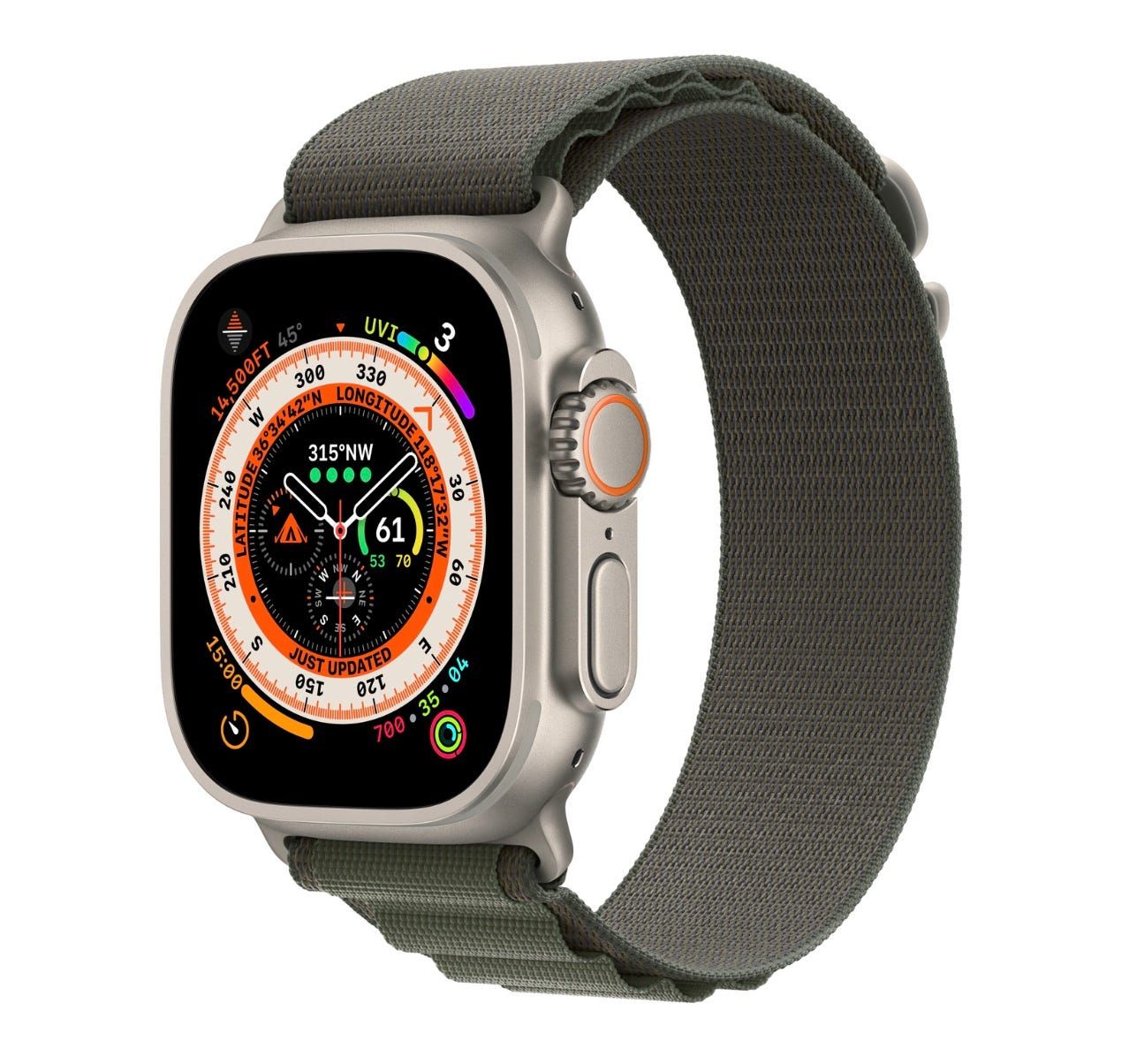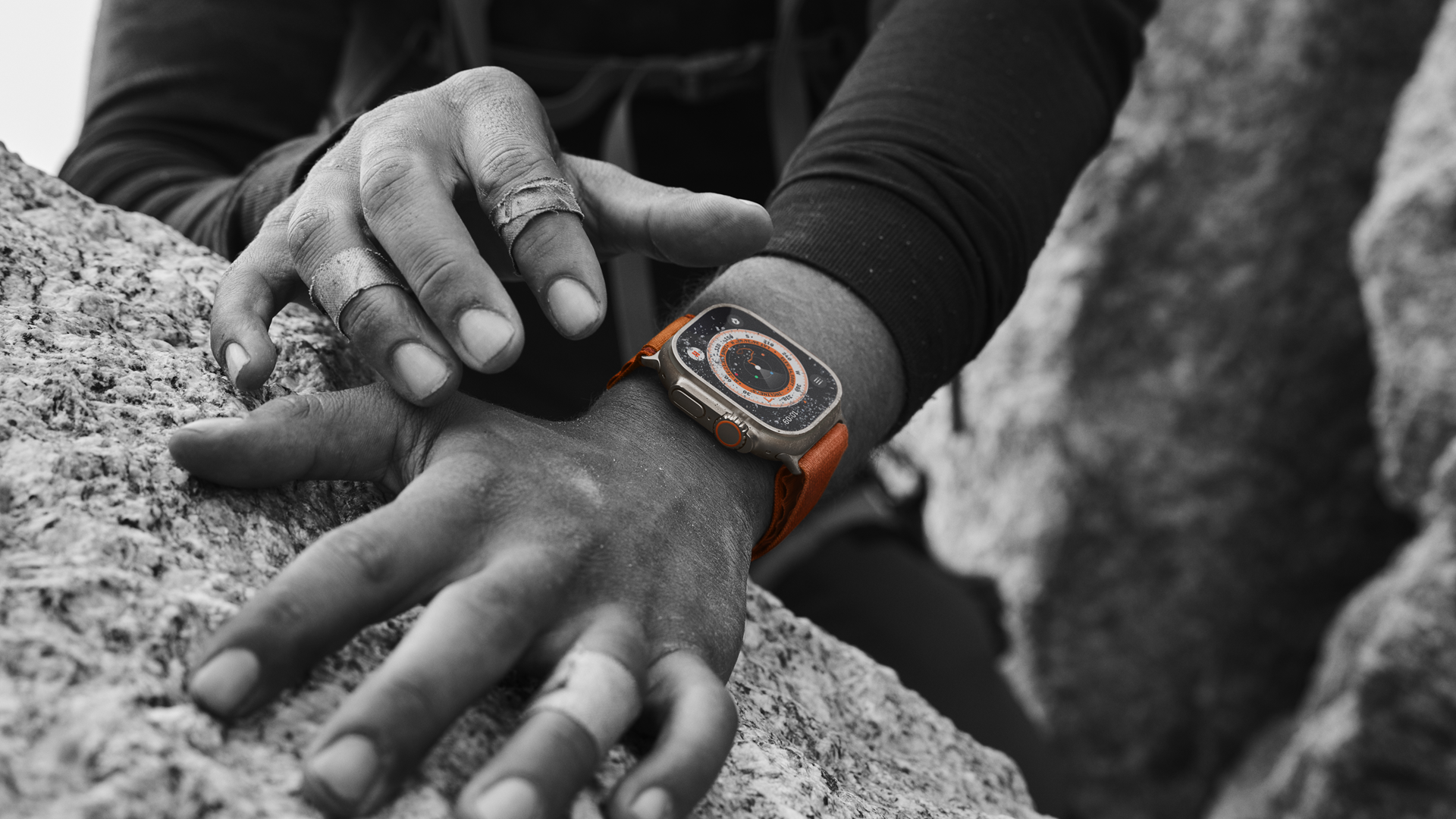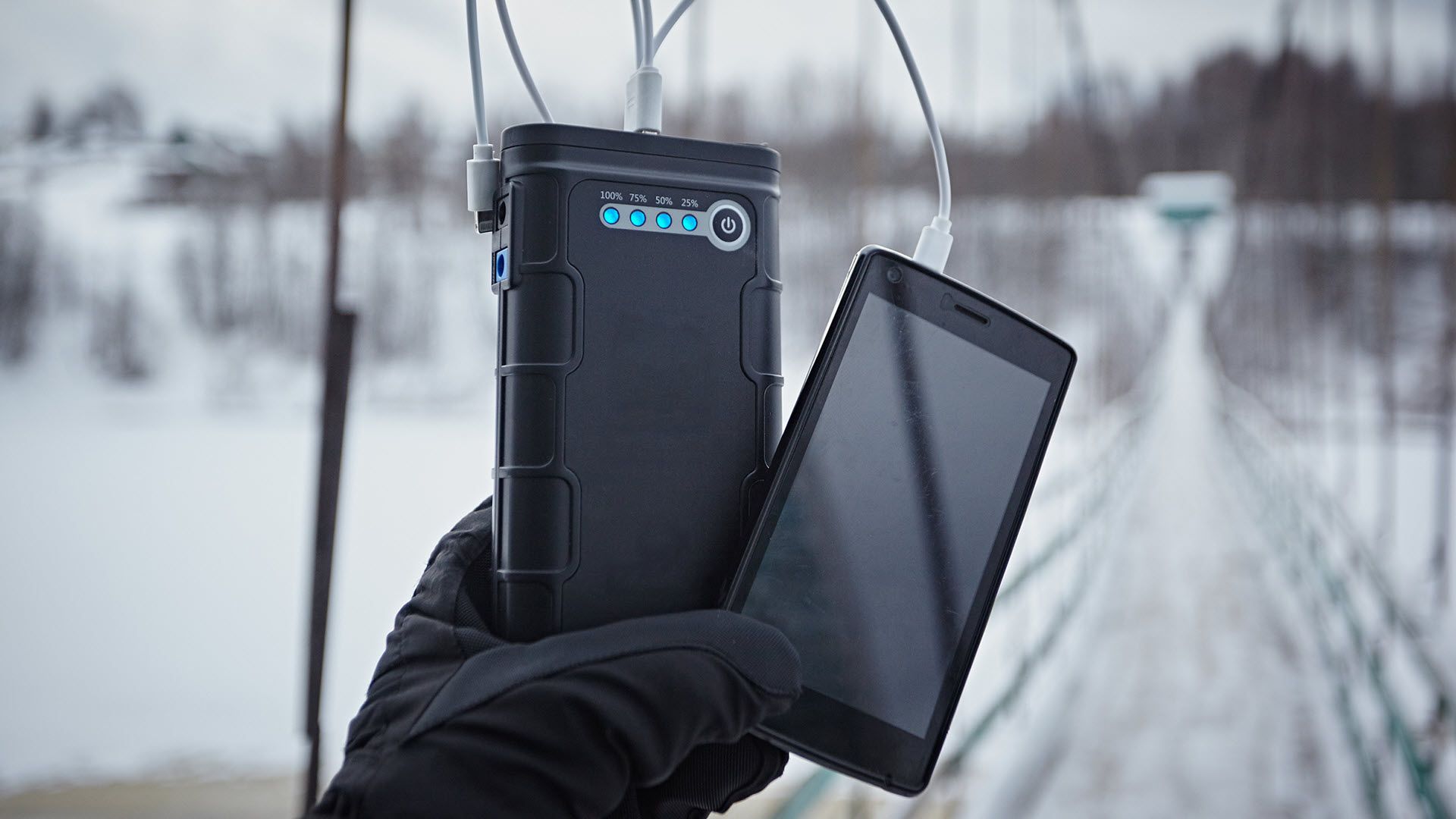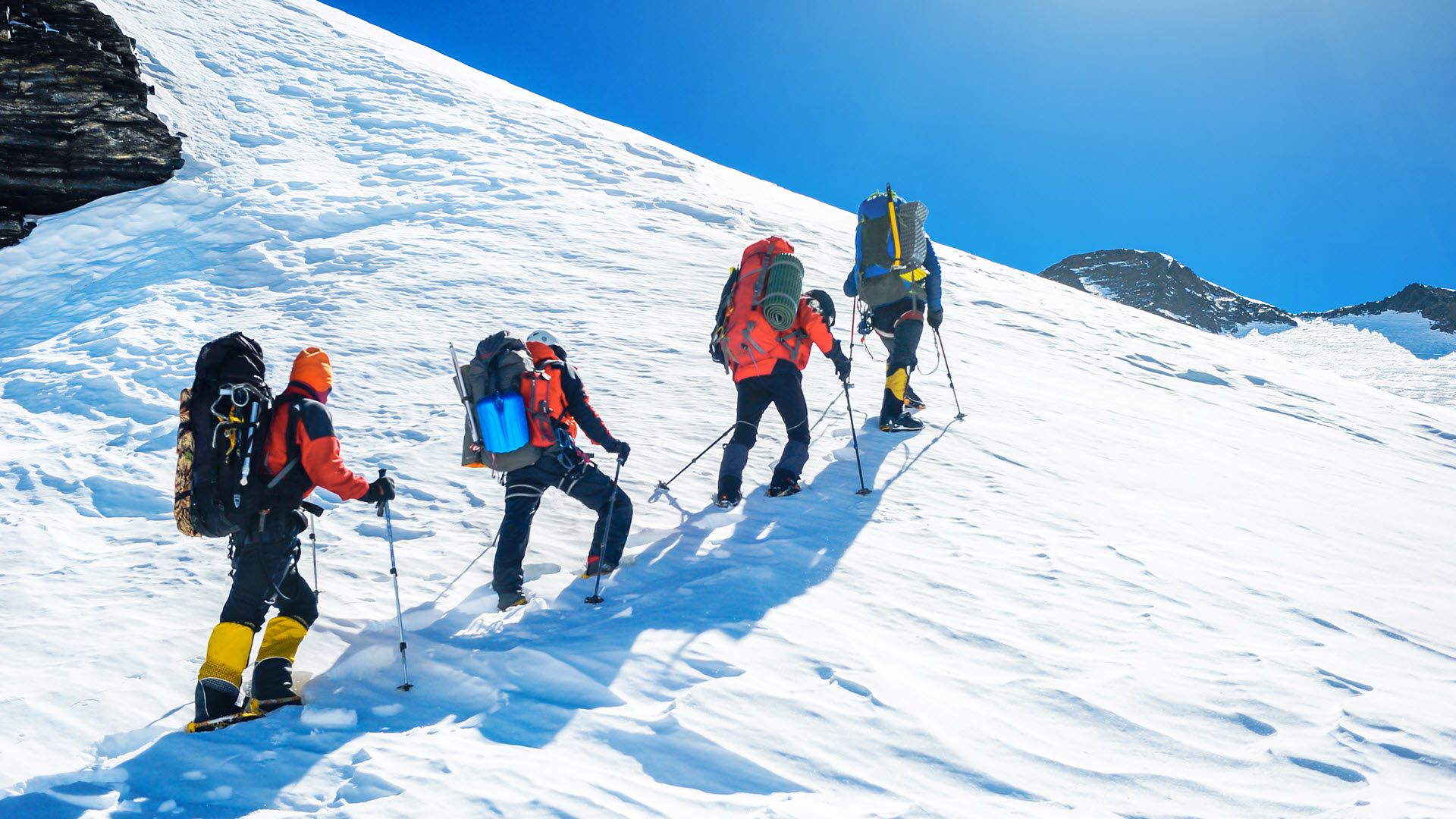Quick Links
The Apple Watch Ultra isn't something you wear on a jog around the neighborhood. It's something you strap to your wrist before you take on nature itself. It's a rugged piece of tech designed to help you survive in a primitive environment. Or that's what Apple is suggesting anyway.
According to Jeff Williams, Apple's chief operating officer, Apple consulted "renowned explorers, accomplished adventurers, and elite athletes." The people giving input are the kinds of individuals that are "drawn to extreme environments." What comes out of the consultations is a watch that Apple has specifically designed for "exploration, adventure, and endurance." The reveal also included a trailer showing a plethora of extreme environments for which the watch is allegedly ideal. Unfortunately, as dramatic as the watch's trailer looks, it is a work of fiction. The watch won't be able to do everything you see -- and science has my back on this one.
I am not for one second questioning the experience of Ray Zayhab, Nadia Aly, or Scott Jurek. I'm not even criticizing the watch's purported features, some of which would be incredibly useful out in the wilderness. What I am doing is pointing out that the watch has a significant flaw that means you could severely hamper its performance or even destroy it by taking it into an "extreme environment." Apple is billing the Ultra as a device that can handle almost anything this planet can throw at it. In reality, it doesn't even come close.
What Is The Apple Watch Ultra?
You can see plenty of outdoors influence in the watch itself, and it is obvious Apple has designed it with weekend adventurers in mind. The titanium case is a clever choice -- with the lightweight metal being popular amongst campers with a reasonable budget. It is extremely light, very durable, and essentially immune to corrosion. My camping kit includes a titanium french press. Many through hikers and survival enthusiasts swear by titanium woks and mess tins, which weigh significantly less than their steel equivalents.
The larger buttons mean you don't have to remove your gloves when using the watch. Gloves serve many purposes, and removing them can be anything from a minor inconvenience to a situation where you won't be able to feel your fingers for around 45 minutes. The screen brightness, microphone, and speakers make it possible to call your mother from an exposed mountain top.
Apple has also fitted a large battery to the watch and claims users can get up to 36 hours of regular use from a single charge and up to 60 hours with the low power setting. This may be one of the most advanced batteries Apple has put in one of its smartwatches, and it is also why you don't want to bring your $800 bracelet into an extreme environment.
Extreme Temperatures Can Destroy a Battery
Mobile tech tends to be battery-powered. As advanced as modern batteries are, they aren't capable of functioning in extreme environments. The batteries powering smartphones, smartwatches, and similar devices, are of the lithium-ion type. Lithium-ion batteries are far more tolerant of the cold than the lead-acid batteries that power things like a car's starter motor. However, they still aren't good enough to survive in extreme cold or extreme heat.
Lithium-ion batteries encounter two major problems when the temperature gets too low. The first is related to charging. A battery uses a chemical process to store power, which only works within a specific temperature range. If you charge your lithium battery at a temperature below 32 degrees, the reaction happens far slower than it should, and the battery's anode becomes coated in lithium -- similar to how regular electroplating works. Lithium plating can cause rapid capacity loss and short-circuiting within the battery cell.
Even if you avoid plugging it in, a drop in temperature can wreck your battery. Researchers have discovered that parts of lithium-ion batteries can crack and separate from their surrounding materials when they spend time at below-freezing temperatures. These cracks can significantly reduce a battery's storage capacity. Things get even worse at extreme temperatures where researchers say the cathode, which is the electrode currant leaves the device from, can separate entirely from the battery.
Not Everyone Encountering These Conditions Is an Adventurer
The above issues can occur at temperatures around or below water's freezing point -- so if you spot ice on the ground or on your car's windscreen, your device's batteries could suffer. The Apple Watch Ultra has an impressive temperature range, with the manufacturer claiming it can withstand temperatures as low as 4° F (-20° C) and as high as 131° F (55° C) while strapped to a person's wrist. The problem is that you don't need to be on top of Everest or trekking to one of the poles to experience these temperatures.
Winter camping has surged in popularity in recent years -- and it's that kind of outdoor activity that could severely damage or destroy Apple's extreme sports smartwatch. Winter temperatures in popular national parks can occasionally exceed the Apple Watch's temperature range. Average low temperatures in New York's Adirondack National Park can be as cold as 3° F between January and February. However, the truth is, things don't even need to be as cold as that. The figures Apple is stating assumes the watch is on your wrist. Apple specifically states:
Apple Watch Ultra accommodates the most extreme environments in outdoor exploration with an on-wrist operating temperature from -4° to 131° F. (ephasis ours)
Your body heat will be doing a lot to keep the battery within its actual safe temperature range. If you take the watch off and it sits in below-freezing temperatures, or worse yet, the battery dies, and you attempt to charge it, you're probably going to damage the battery. You can also encounter temperatures above the 131° F limit inside a car with no air conditioning during the summer. But if that happens, you might come out of the situation in a worse condition than your smartwatch.
As far as the Earth's most extreme environments go, the Apple Watch Ultra has no chance. Average temperatures at the South Pole are lower than the Apple Watch Ultra can handle ten months of the year. During the two months a year, the Apple Watch has a chance of operating within its manufacturer-specified temperature range, but the averages are still pretty close to -20 degrees Celsius. Summiting Everest may seem toasty in comparison, but the warmer end of the world's tallest mountain's temperature range is still at the limit of what the Apple Watch Ultra can take.
So What Do Actual Explorers Do?
On May 29, 1953, Sir Edmund Hillary became the first man to summit Mount Everest. On his wrist was a mechanical watch made by an English company called Smiths. Sir Edmund later claimed that the watch had performed "very well" during the expedition -- and almost 70 years on a mechanical watch will almost certainly outperform a smartwatch in similar circumstances. Mechanical equipment is a more reliable option if you're going into extreme cold. Even if it freezes, it will operate again when you heat it up. A battery-powered device, on the other hand, will be permanently damaged and may fail completely.
If you absolutely must take electronics, you'll have to rely on your body heat to protect the batteries. This could be risky as you must go under your clothing and lose precious heat to fish the device out. The devices will also cool quickly; the cold could still damage them in the short time they spend away from your body. And it's worth nothing that in Apple's commercial for the Ultra, the company showed the watch on a coat sleeve
Is the Apple Watch Ultra a Waste of Money?
The Apple Watch Ultra is probably a great device to have on your wrist in many scenarios. If you like camping and hiking, it will be fine for around three-quarters of the year. The diving features look great, and marathon runners and triathletes may be excited about it. Most of Apple's presentation featured scenarios where the watch should work as described.
The only thing it isn't built for is extreme cold. That's not even Apple's fault; it's one of the limitations modern batteries have. So if you like the look of the Apple Watch Ultra, and the price tag doesn't make you wince, feel free to buy one. Make sure you don't take it on any extreme adventures and expeditions you have planned.

Apple Watch Ultra
Get the all-new rugged Apple Watch Ultra built for adventure, starting at $799.





